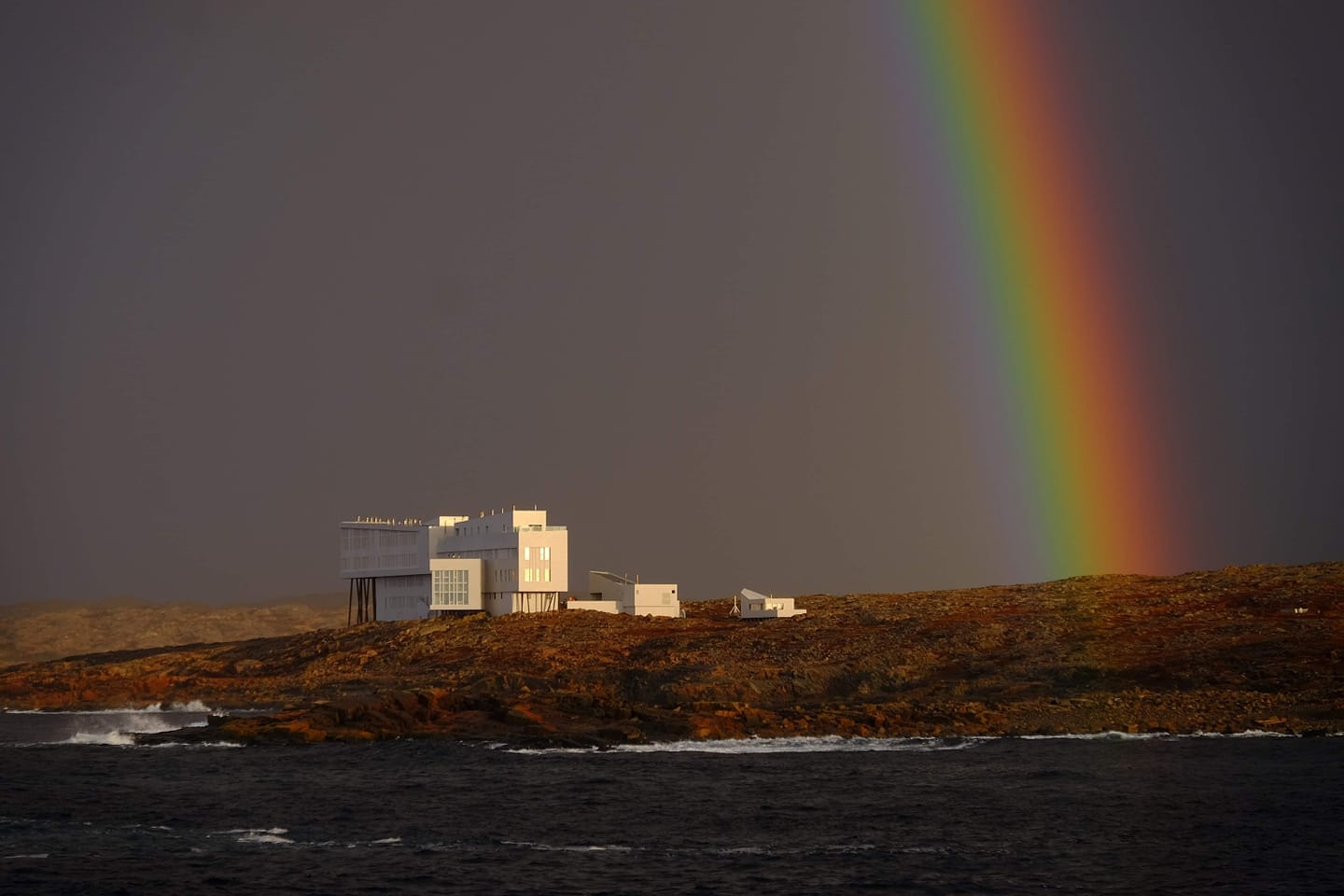Few people have heard of Fogo Island or the Fogo Island Inn and even fewer have visited, yet what’s happening in this small, remote Canadian fishing community could well be a blueprint for minority group survival anywhere in the world.
Perched on an island off an island in far northeast Newfoundland, Fogo Island Inn has been described as the most magical and most remote hotel in the world.
Designed by Newfoundland-born, Norway-based architect Todd Saunders, the contemporary accommodation of 29 suites pays homage to the wooden stilts of traditional fishing ‘stages’ or sheds that remain the signature of the island.
Measuring just 25kms long by 14kms wide, Fogo Island, along with neighbouring Change Islands, is one of Canada’s oldest communities. Located along ‘Iceberg Alley’ in the Labrador Strait, it is literally on the edge of the world – Brimstone Head, one of the island’s natural attractions, is believed by the Flat Earth Society to be one of the four corners of the earth.
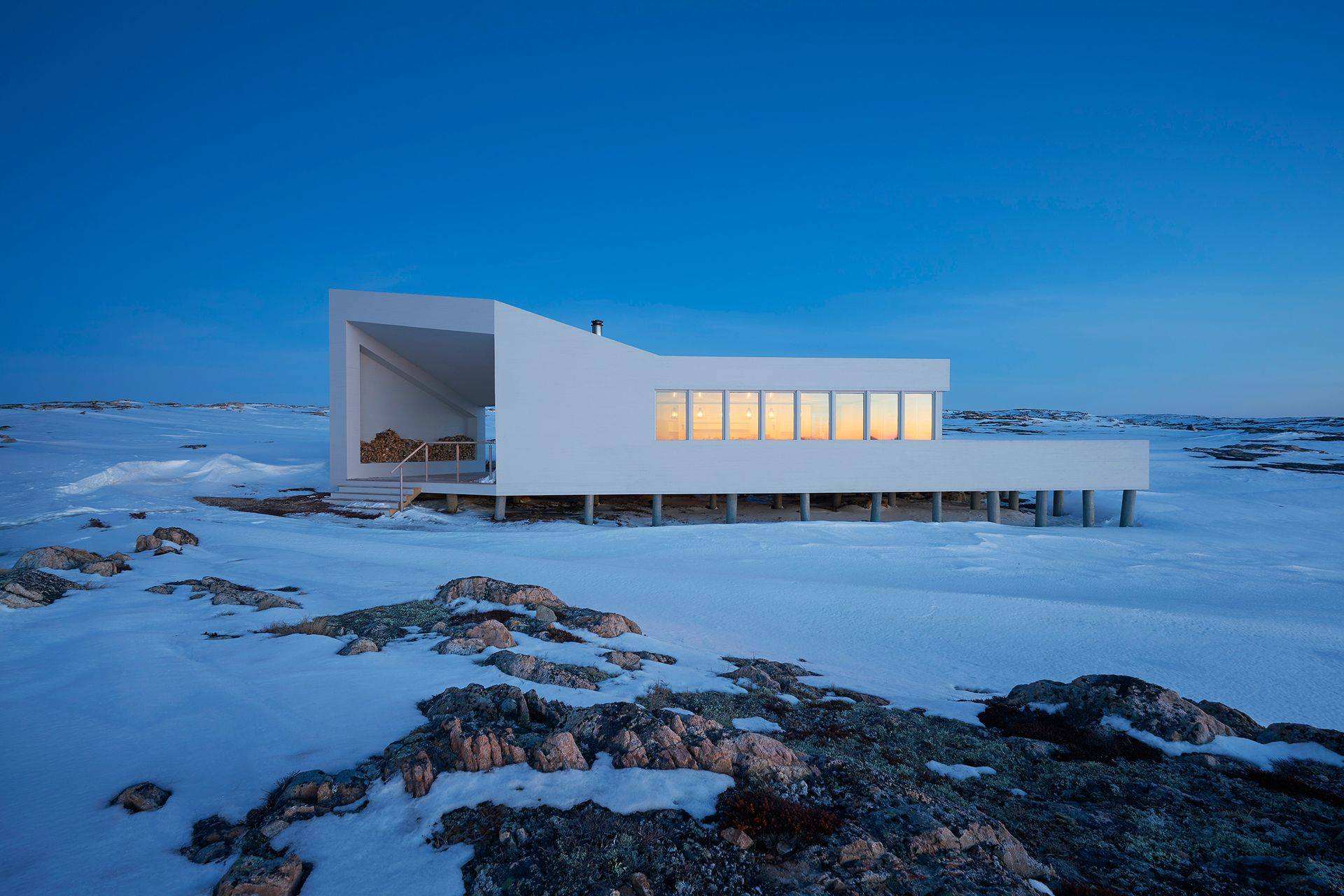
Getting to this undiscovered haven is an adventure in itself: a drive of almost five hours from the provincial capital of St John’s to Farewell, is followed by a 45-minute ferry crossing, then a further 27km drive to the inn, via the charmingly named communities of Seldom, Little Seldom, and neighbouring Seldom Come By (I’m told fishing boats to the region seldom came by the small port without calling in).
For some 500 years, the local cod fishing industry was the mainstay of Newfoundland. When mechanized trawlers were introduced in the ‘60s, the abundant breeding grounds were rapidly depleted to the point that, in 1992, the Canadian Government declared a moratorium on the Northern Cod fishery. It also significantly affected the ecological, economic, and socio-cultural structure of the region and none more so than on Fogo Island. It’s population of around 5,000 dwindled to 2,500; people were leaving the island in droves.
One young girl who left the island at 16 was fisherman’s daughter Zita Cobb, who studied business at university in Ottawa and went on to make a small fortune in fibre-optics. A multi-millionaire at 42, she retired to sail her yacht around the world for several years, but at around 50 decided to return to her island home and invest her money there. She spent CA$43 million (US$33 million) building the inn and set up the Shorefast Foundation with her brother Anthony in 2006 to run it. All profits from the inn were re-invested in the community, to ensure an income for islanders and to ensure local culture and traditions were maintained. She also built four minimalist studios for visiting artists from around the world.
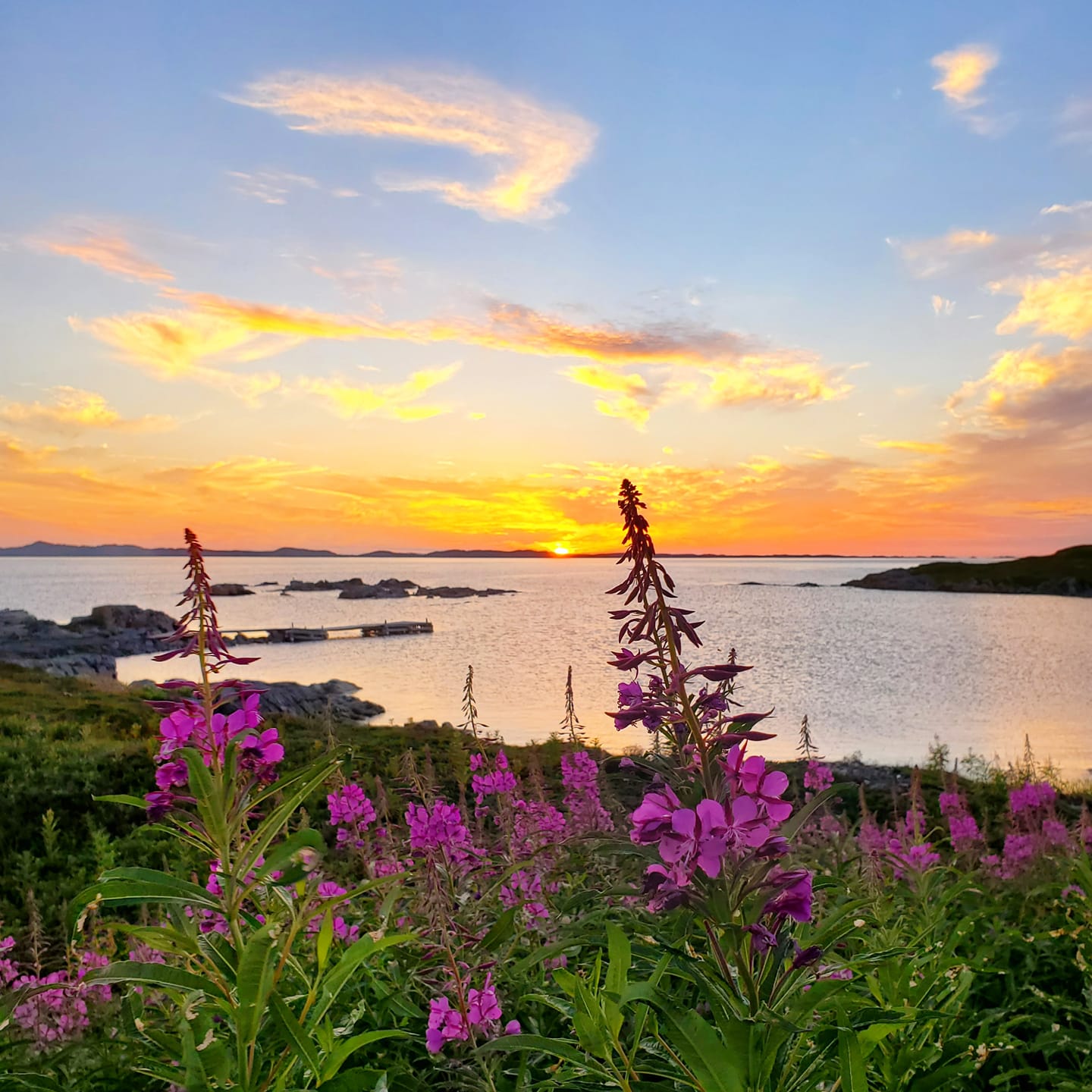
Local builders were engaged and hundreds of craftspeople on the island were commissioned to sew, knit, crochet and quilt home-style bedspreads, cushions and throw rugs for the lounges and guest bedrooms while local studios fashioned traditional-style furniture. A dozen different patterns of wallpapers were designed depicting aspects of island life and big names such as UK-based interior designer Ilse Crawford were brought in to help bring local designs to a new level. As the inn came to fruition it breathed life into one of eastern Canada’s most remote settlements and continues to do so with every guest arrival.
Today the multi-award-winning inn, with its restaurant overlooking the often-wild ocean, its welcoming fireside bar, heritage library, art gallery and 37-seat cinema, is an icon of ingenuity, and a model of community-mindedness. There’s the vibe of a family beach house and it would be very easy to stay indoors, totally mesmerised by the constantly changing seascapes beyond.
However, there’s also a chance to play your part. As part of the all-inclusive tariff, guests are assigned a community host whose unscripted tours are entertaining and fascinating and can be customised to include arts and crafts, museums and, in my case, a visit to a local cemetery. The Irish cemetery in Tilting is believed to be one of the oldest in North America; here my host Clem Dwyer, a retired high school teacher, points out the tombstone of Joe Batt.
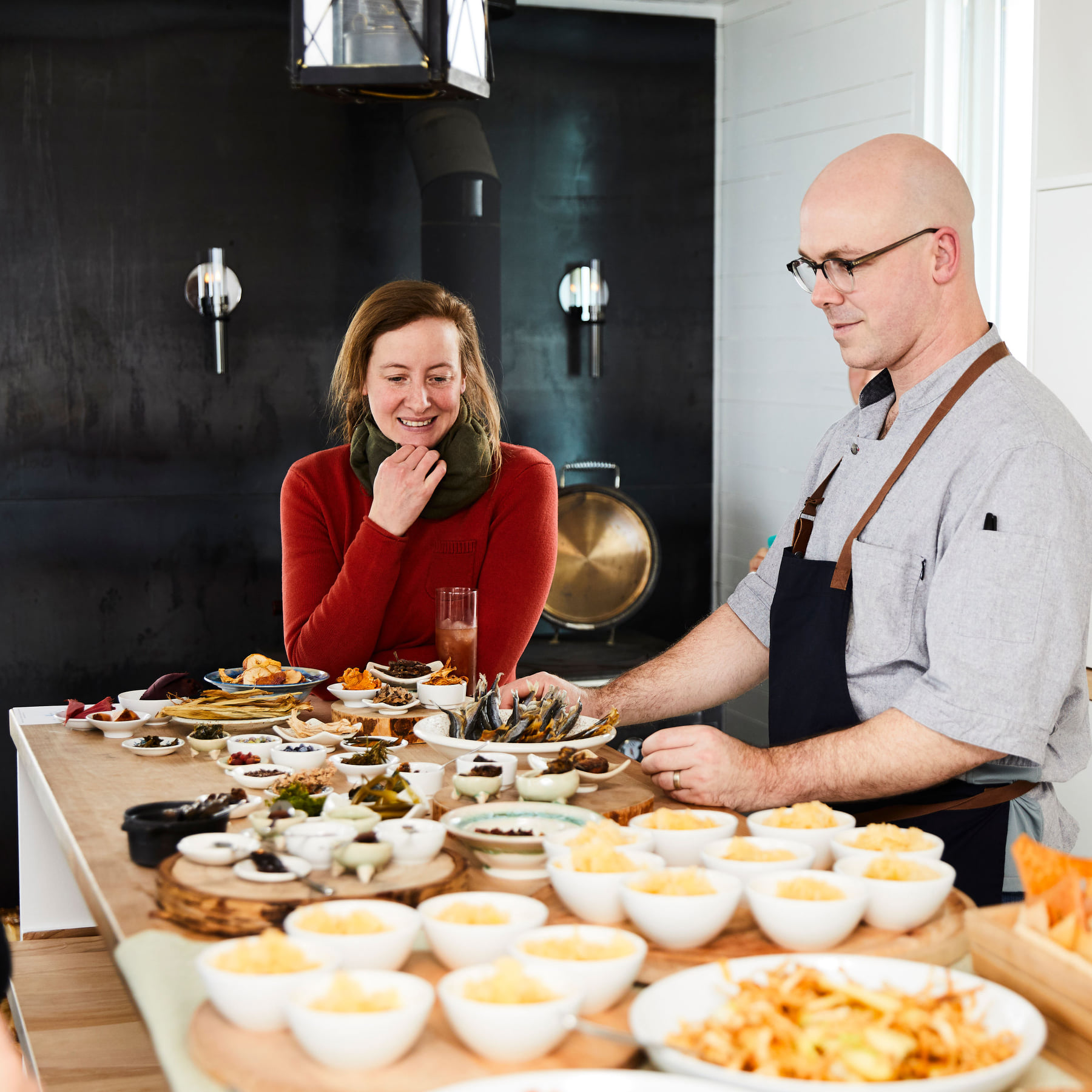
“He was a crew member on Captain Cook’s ship, the Endeavour,” says Batt. “He jumped ship when they passed by in the 1760s and settled on the island.”
In the township of Tilting, home to just 175 souls, lilting Irish accents are as thick as loaves of soda bread. You could swear you were in Dublin. Families with surnames such as Dwyer, Foley and Bourke are now sixth and seventh-generation Fogo Islanders, many descendants of Irish deck hands recruited centuries ago by fishing boats from Portugal, France or England who at the end of the fishing season in the North Atlantic decided to stay, considering life on Fogo Island preferable to repressive Ireland at the time. Early English crew members from the West Country settled in Joe Batt’s Arm.
The island has seven official seasons. As well as the universal four, there is also trap berth season, pack ice season and berry season, where some 20 different edible berries carpet the ground with vibrant colours. I’m here in berry season and forage for red partridge berries, black crowberries and burgundy-coloured marshberries, all of which join other regional delicacies on the menus of inn executive chef Timothy Charles.
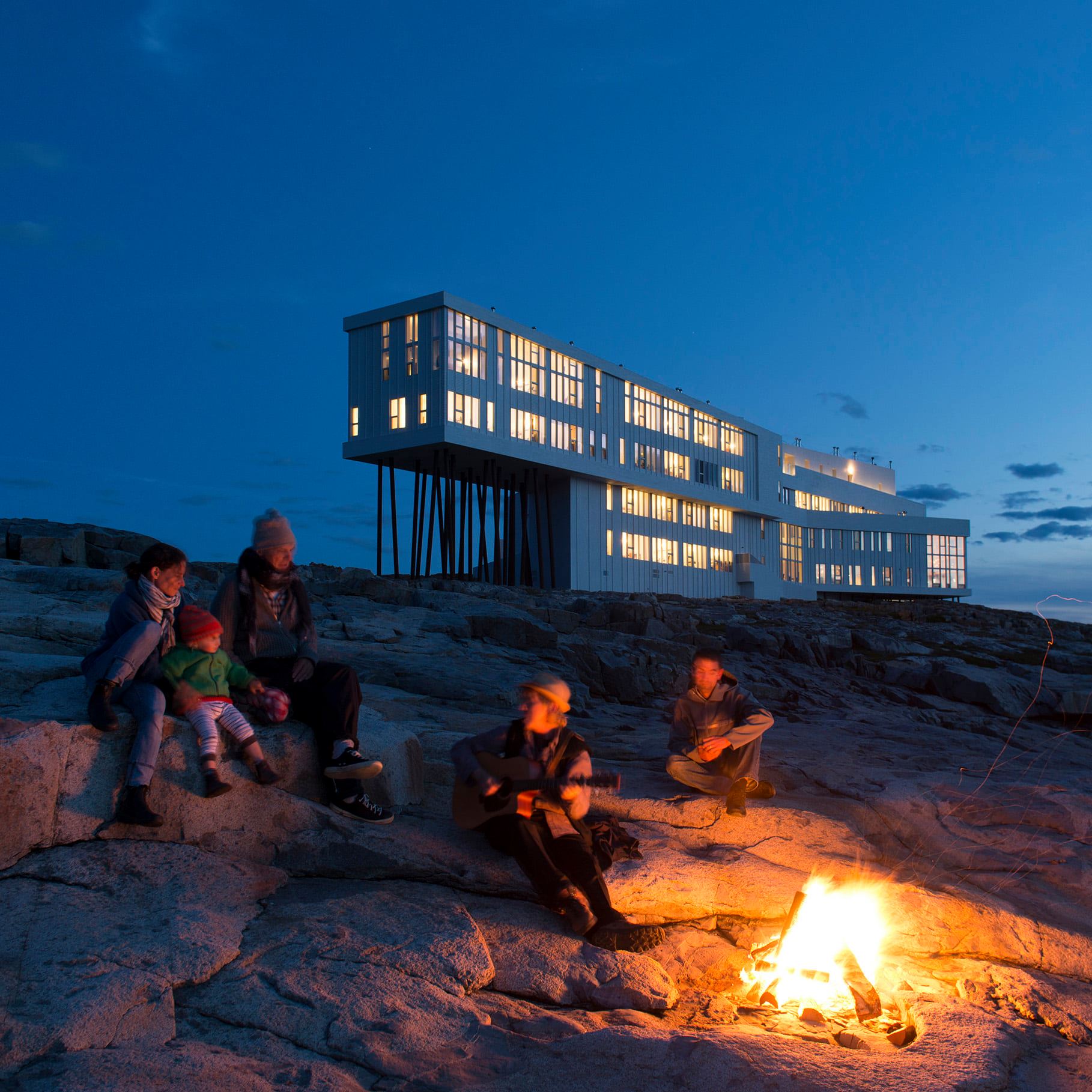
A visit to Fogo Island and its amazing inn is life-enriching on so many levels, and the minimum two-night stay is not nearly long enough. Memories of such a unique experience are sure to stay with you for a very long time.
For more Accommodation inspiration click here.

